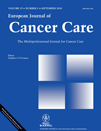Re: Gishen F. & Trotman I. (2009) Bedside Ultrasound – experience in a palliative care unit
Thank you for inviting us to respond to the letter by McCoubrie et al. (Gishen & Trotman 2009) commenting on our recent paper ‘Bedside Ultrasound: experience in a palliative care unit’. In their letter, these authors draw attention to recommendations made by the Royal College of Radiologists (2005) when criticising our use of ultrasound in the hospice setting. We would like to point out, however, that recommendations are not rules, and neither are they clinical guidelines. As such, they allow for the application of both common sense and clinical acumen in their implementation, both of which we have strenuously endeavoured to apply to our use of limited ultrasound examinations in our terminally ill patients.
As we clearly state in our article, we look only for very obvious ultrasound findings, such as ascites or pleural effusions, and would clearly, in the interest of patient safety, refer any complex cases to our radiology colleagues. With 2-year dedicated radiology training, the clinician (F. G.) using the ultrasound equipment in the hospice considers her knowledge of the necessary physics to be perfectly adequate for such purposes, and the number of scans carried out in the hospice is currently over 80 per year. Moreover, the service is evaluated and its quality assured by the local Trust's Medical Physics Department on an annual basis.
Many practitioners working in specialities, such as Obstetrics and Gynaecology, Vascular Services, Cardiology, Urology and General Practice, use ultrasound with less extensive training than this, including some working in our affiliated teaching hospital. Here, junior physicians are awarded certificates and deemed competent to perform such scans unsupervised after observing 20 and performing five ultrasound investigations under supervision for paracentesis or pleural effusions. Nationally, many of our A & E colleagues (some of whom are non-medical) are trained to use ultrasound in their daily practice, and we would challenge the assumption that non-radiological specialists trained to conduct a limited range of investigations by such means where properly indicated produce less accurate reports than radiologists themselves in such circumstances. Indeed, we believe that the letter contains strong elements of professional protectionism that do not apply universally.
Most importantly from our perspective, the service is much appreciated by patients who would otherwise spenda considerable amount of the little time they have left travelling to and from the local hospital where they would wait in sometimes inappropriate settings to have their scans performed by an ultrasonographer or radiologist. The suggestion of a peripatetic ultrasound service is an interesting one, but our palliative medicine colleagues will appreciate that it is often very difficult to predict need and plan accordingly when patients' needs change as quickly as they do in the hospice setting.
We believe that the provision of a limited range of ultrasound investigations for our palliative care patients ‘on site’ has demonstrated improvement in the quality of care previously delivered and reduced patient distress. The service we have described is both innovative and economically sound, and while we acknowledge that safety issues do need to be considered, we have seen no significant complications from paracentesis performed in the palliative care setting. We feel that the paper encourages other palliative care clinicians to reconsider their level of service provision and challenges-prevailing assumptions about what should and should not be provided by a specialist palliative care service. Hopefully it will also encourage service development and promote innovation in this important area of care, which must of course include consideration of individual professional boundaries and the need for new ways of working if patients' needs are to be met in the most appropriate manner.




